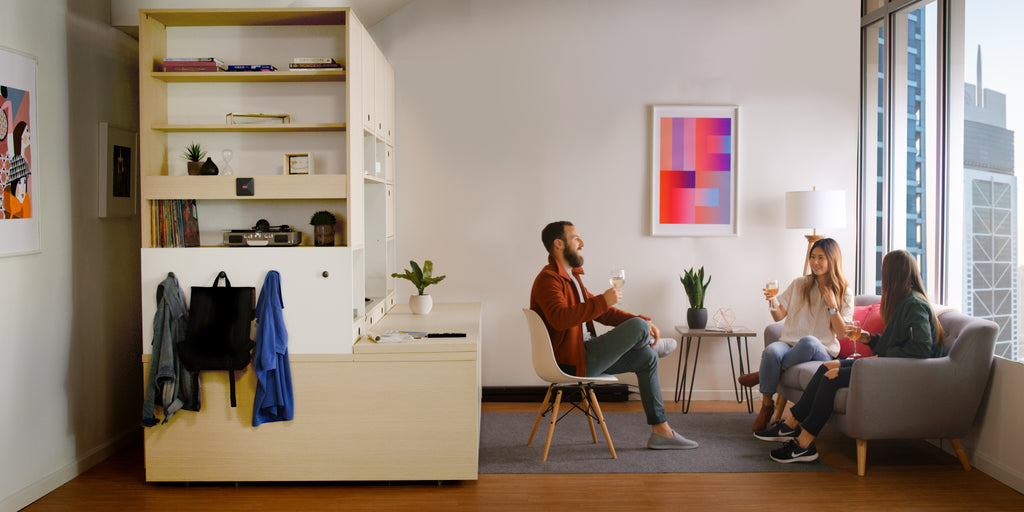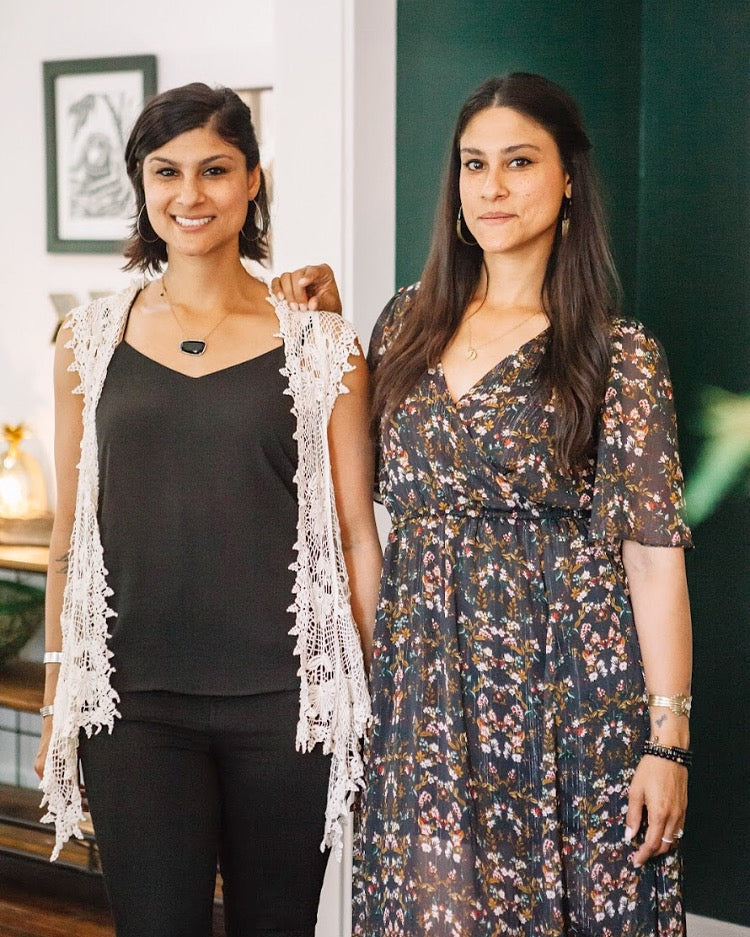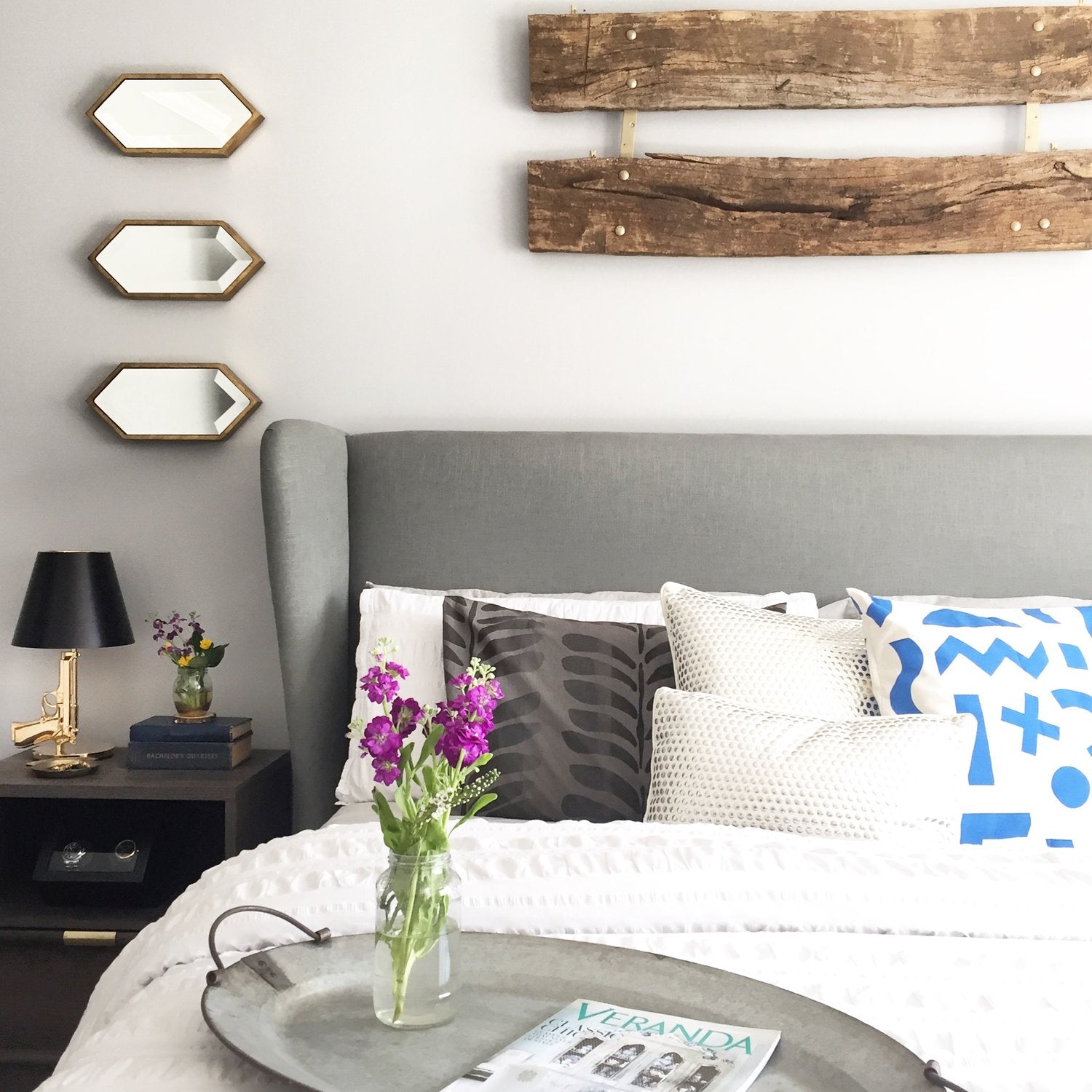Ori Founder Hasier Larrea is Revolutionizing Urban Design—One Square Foot At a Time
What if you could transform one room a hundred different ways—with little to no effort? Ori—a smart new architectural innovation inspired by origami, the art of Japanese paper folding—is designed to help you do just that.
Conceived by MIT wunderkind Hasier Larrea in collaboration with Swiss designer Yves Béhar, the revolutionary system combines furniture and robotics to create a clever and compact space capable of morphing from a living room into a bedroom, living room, dining room, closet or office in mere seconds—all with just the touch of a finger, a wave of a hand, or a simple voice command.
“We're proving that every square foot is not created equal. A 300-square-foot apartment with Ori’s technology can have the functionality of a 500- or 600-square-foot apartment,” Hasier says. “That’s how you change the paradigm of space.”
Made out of poplar plywood—which is more lightweight and durable compared to similar materials, such as MDF or particle board—Ori comes in two configurations: Full and Queen, each available in a light or dark finish. Both feature retractable beds and desks and enough room to house a 48-inch TV—not to mention ample storage space (though the Queen boasts extra shelving and a larger closet).
Manufactured in the United States, each smart system comes with an on-device console with presets to control the unit’s movement, along with an app that allows users to reconfigure its settings from anywhere in the world and access additional functionalities through Google Home or Alexa. The installation, which glides back and forth on a linear track fixed to an uncarpeted floor, requires a standard 15/20A circuit and consumes about a tenth of the electricity a hairdryer needs. To boot, it features a 120W AC/DC internal power supply and three outlets to power electronics. (In case of an electrical outage, the unit automatically switches to manual mode, and users can continue to use it simply by pushing or pulling.)

Down the line, “designers will be able to customize all of the furniture in the system and create hundreds, if not thousands of possible configurations,” Larrea notes. Eventually, the company plans to expand into single products, such as connected beds, toilets, and tables. “We’re also thinking about other kinds of spaces, like hotels, offices and dorms, and how we can make small spaces more efficient and livable with our robotic technology.”
The company’s first production run of 1,200 systems can be pre-ordered exclusively by real estate developers for roughly $10,000 apiece, though individual units will later be marketed to the public for an undetermined price. So far, the systems have been integrated into a slew of large-scale developments throughout the U.S. and Canada—among them, The Vintage in Washington, D.C., Watermark Seaport in Boston, The Eugene in New York, and Monarc at Met3 in Miami.
Here, Larea offers insight into Ori’s pioneering technology, discusses the unit’s requirements, and details the system’s security features.
What are the unit’s chief components?
Any Ori system has four layers: the muscle to drive the system; the skeleton with the mechanics and electronics to enable transformation; the brain to interact and connect to other smart devices; and the skin or furniture that allows the customization of the experience. Thousands of engineering hours have gone into creating the product. That includes mechanics that make the system energy efficient and require little power to move.

How long did the concept take to develop? When did you debut the prototype?
We developed many Ori prototypes while at MIT—we called them "furniture with superpowers." This video shows one of our very first prototypes.
How much space is necessary for the system to fully function?
It depends on the system configuration, the size of the bed, etc.
What are the unit’s dimensions?
Queen Standard: 98” x 151” x 94”
Queen Reversed: 98” x “127” x 94”
Full Standard: 92” x 139” x 94”
Full Reversed: 92” x 115” x 94”
(The “reversed” models open to the living room instead of the private area.)
What are the dimensions of the boxes the unit ships in?
The largest package for the queen system is a 96” x 40” x 10” box, and the largest package for the full system is a 90” x 40” x 10” box.
How long does it take to install a single unit?
We're targeting one-day installation with two certified installers. The system comes flat-packed in a group of packages, allowing for easy transport.

Do you employ any sustainable methods or incorporate any eco-friendly materials into their construction?
Not at this time, but we are continuing to explore new materials that would further optimize the design and build of the unit.
How safe and intuitive is Ori? When on auto mode, is there any chance the unit could suddenly move or shift without being made to?
The system is incredibly safe and user-friendly. It is is designed to automatically stop when it encounters any type of resistance, very much like a garage door opener. The unit is also very slow moving, which gives it time to react to unexpected objects in its path. We're working to obtain the required safety certificates before launching our production units.
Are there any programmable security measures that can prevent kids from accessing the interface or remote control?
We positioned the control interface at a height that does not allow children to access the buttons or operate the system.
All smart systems connected to Wi-Fi/Bluetooth have the potential to be accessed by unauthorized users. Have you implemented any fail-safes guarding against hackers?
We take this matter very seriously and are working with secure, third-party platforms such as Amazon AWS and Particle. Another benefit of the system is that it does not need to be connected—or “online”—in order to operate.

Do you have an Ori system in your own home?
Not yet, but hopefully soon. I would love to live in a smaller apartment with an Ori system if I had the chance.
About The Author
















